CHAPTER 3
MAKING THE MOST OF RIPENESS
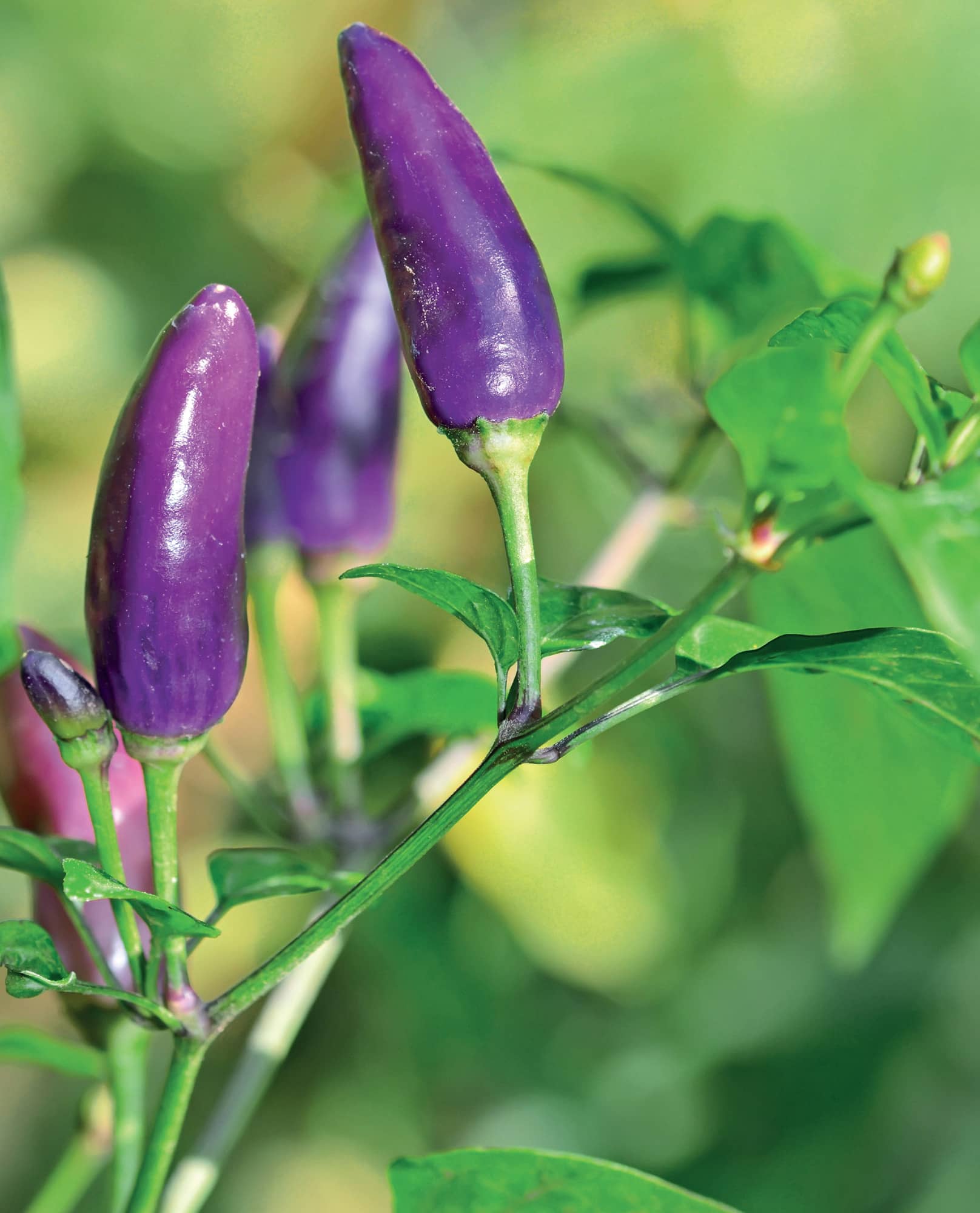
AS IF IT WEREN’T ENOUGH OF A CHALLENGE TO GROW AND HARVEST perfectly ripe fruits and vegetables—and select and buy them—you also have to be sure you put your ripe produce to best use in the short time before things begin to decay and fade in quality. This is a bigger challenge than you might think. Experts at University of California at Davis estimate that 25 percent of all fruits and vegetables are not eaten because they are damaged or rot before they can be consumed.
Part of that is simply the reality of large-scale produce cultivation and transportation. A truck breaks down and peaches meant for the market are stuck on the road for an extra day. A freak rainstorm floods a lettuce field and makes picking impossible. But a lot of loss happens in the home, and much of that could be prevented.
It’s a matter of knowing the fine points of how to handle the produce you grow or buy. It’s just a fact that different fruits and vegetables are more or less sensitive to cold or heat. Some store well long-term, while some will barely make it a few days. Simple practices, such as when you wash a piece of fruit or a bunch of garden greens, can radically affect how long they will stay optimally ripe.
25 percent of all fruits and vegetables are not eaten because they are damaged or rot before they can be consumed.
CARE AND HANDLING
Whether what you harvest is delicate or durable, you can never go wrong by treating produce with kid gloves from the moment you pick it to the moment you eat it. That means not dropping potatoes or apples into a bucket, but gently placing them instead. It means not stacking fresh-picked berries four layers high.
This is true, too, of the produce you buy. If you’ve ever watched as a grocery cashier tossed a peach into a bag of groceries, you’ve seen an assault on ripeness. If you’re buying a lot of produce, or sensitive seasonal summer fruit, do your own bagging. Your family will thank you when they’re eating wonderfully ripe tomatoes without squished sections, or apricots that haven’t been bruised.
Keeping ripe produce safe also means—in most cases—keeping it away from diseased and damaged brothers and sisters. Diseased or rotting fruits and vegetables have the potential of passing those conditions on to healthy crops. Always police the ground and area around plants and trees, and quickly pickup and discard obviously defective fruit. Removing diseased fruits and vegetables from a plant not only limits the damage and spread of disease or insect infestation, it also helps spur future healthy growth.
Proper handling is only the first step in enjoying ripe produce. Just as important is how you store that produce once you get it into the kitchen.
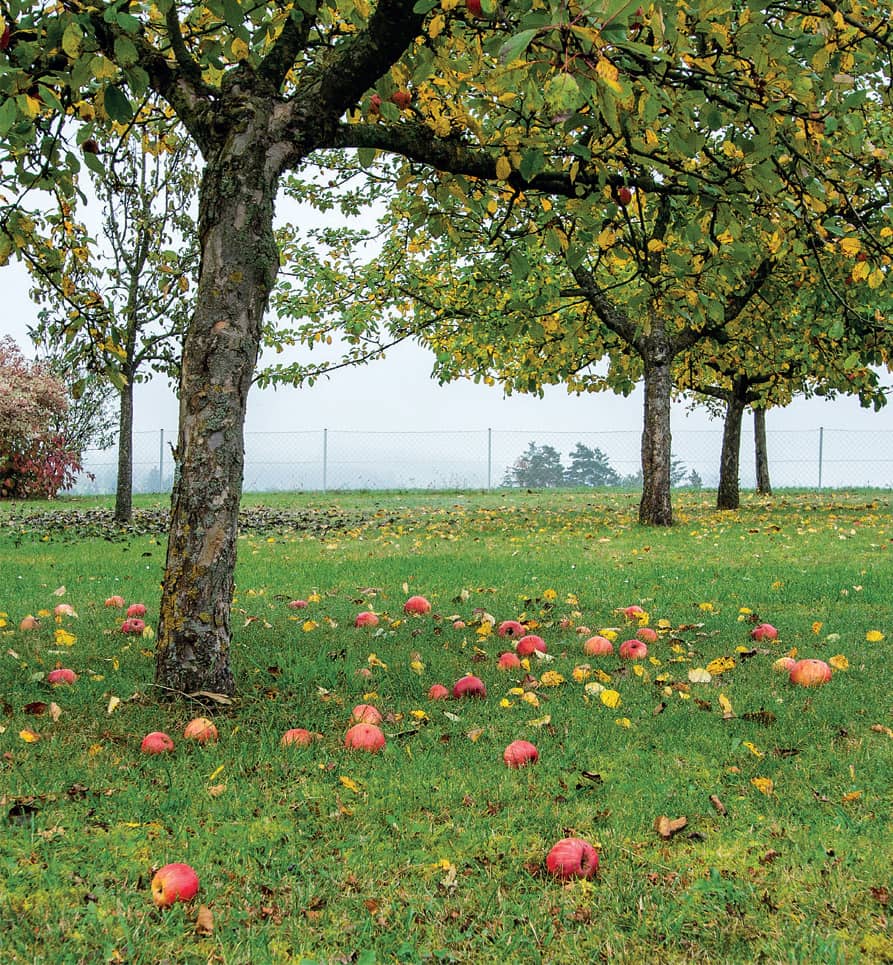
It’s important to clean up dropped fruit around fruit trees to prevent the spread of disease and to keep on top of harvesting the ripe fruit.
STORING RIPE PRODUCE
Whether you’re bringing a basket in from the garden or a brown paper bag in from the car, getting the most out of your ripe produce starts with where you put it when you unpack it.
Many fruits and vegetables begin changing the moment you pick them. Some start slowly, ripening even more, while others simply deteriorate in quality. Those reactions determine the best place to store any given fruit or vegetable in the short term.
Keep in mind that leftover sections of a fruit or vegetable are usually wrapped in plastic or put in a sealed container, then refrigerated. Of course, short-term storage isn’t the only strategy for making best use of fruits and vegetables. There are many ways of preparing fruits and vegetables so that they can be used later and their flavors can still be enjoyed.
Juicing. Fruit—and some vegetables—that are on the cusp of overripe are often becoming soft and juicy. What better way to take advantage of that state than to reduce the fruit to its flavorful essence? You can juice many fruits by hand, although basic juicers are relatively inexpensive (and a wise purchase if you have a large citrus tree or two in your yard). The juice will keep for several weeks, if not months—a lot longer than ripe fruit or vegetables!
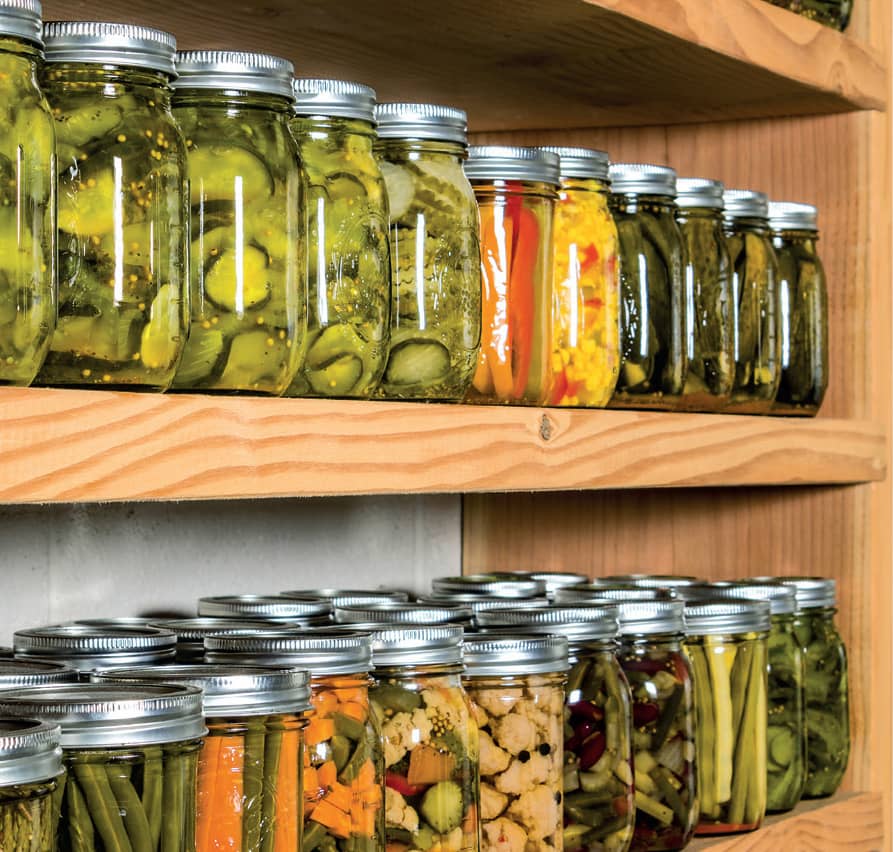
If you have the space, time, and energy, putting up fruits and vegetables can be a fantastic way to extend ripeness throughout the year.
Preserving. Although it takes a fair amount of work, this is a tried-and-true method for keeping ripe fruit at the ready for whenever you want it. An incredible number of fruits and vegetables can be canned, pickled, fermented, or otherwise preserved at little cost and for great reward. A large tomato harvest can fill a pantry shelf and provide all the tomatoes you’ll need to make it through winter. Pickle carrots and asparagus for a snack that is elegant enough to fill cocktail party platters, or ferment cabbage for the traditional Korean kimchi, a spicy favorite.
Drying. Many fruits and vegetables can be dried to preserve the ripe goodness. Drying, in most cases, concentrates flavor, maintains nutrients, and reduces the yield to a more manageable size for storage. It can also be free. You can dry fruits and vegetables on a screen outside. You can also use your oven to speed up the drying process. Of course, if you prefer, and you have a bumper crop in need of drying, you can buy a dehydrator to speed up and regulate the process.
These options all address possible short-term strategies, but there are longer-term alternatives that you can consider, depending on what you’ve harvested.

Sun-drying some of a bumper crop of tomatoes intensifies the flavor and creates a wonderful snack and ingredient that allows you to have the flavor of summer year-round.
HOW TO SET UP A ROOT CELLAR
A root cellar is a traditional way to store fall crops for use over winter. Fortunately, you don’t have to start excavating your backyard or move to the country to have one. That’s because the cellar is more about climate than location. A corner of a basement can serve the purpose quite well. You just have to make sure the cellar will have certain essential features.
Humidity. Find the wettest corner of a basement or storage space, because most root cellar crops prefer humidity around 80 to 90 percent.
Ventilation. The space needs to have airflow. Usually a lower intake and higher exhaust vent are required for a functioning root cellar. The same is true if you’re using a basement as one.
Shelving. The storage should be outfitted with shelves made from a material that will hold up to a wet environment and the stresses of supporting many pounds of produce. Ideally, they should be adjustable because the space will be cooler, lower to the floor, and different produce should be stored at different heights.
You can go further and create walls (with a high/low vent system) and a door for your root cellar space, which will allow you to more closely control the humidity and temperature. Once the space is together, you can begin storing your crops, following the recommendations in the individual listings in Chapter 2.
EXTENDING THE SEASON
Part of making the most of ripe produce is stretching the time when ripe is ripe. That’s done by creating small or large artificial environments that create a longer growing season. These range from modest, such as simple row covers, to incredibly complex, as with a full-scale, fully equipped greenhouse.
Extending seasons won’t work for every crop. For instance, it probably won’t be possible to move a fruit tree into a greenhouse. But many of your plants can be tricked into believing fall extends into January, or that spring begins in February.
Row covers. When you just want to keep plants from freezing for a couple days to a couple weeks, row covers can be the answer. They can also allow you to get a jump on plants that like to ripen in cool weather, but whose time to maturity will take them into summer weather. Row covers are inexpensive, widely available, and easy to use—just put up stakes or hoop supports and drape the cover over the row.
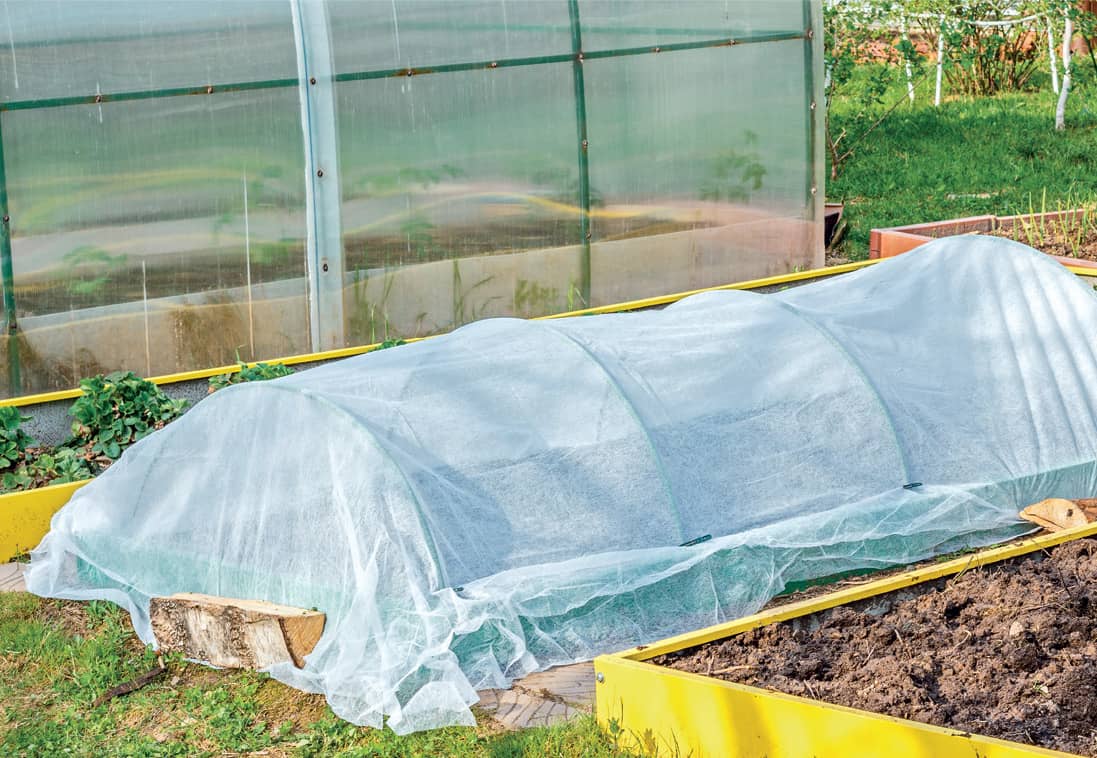
Row covers are ideal for raised beds too.
Hoop houses. Hoop houses are the midpoint between a row cover and a greenhouse. Enclosed, with a base and a skeleton of hoops, the hoop house allows you to get inside with your plants, and can accommodate taller or bushier plants. Larger hoop houses come with doors, making these the next best thing to a full-blown greenhouse.
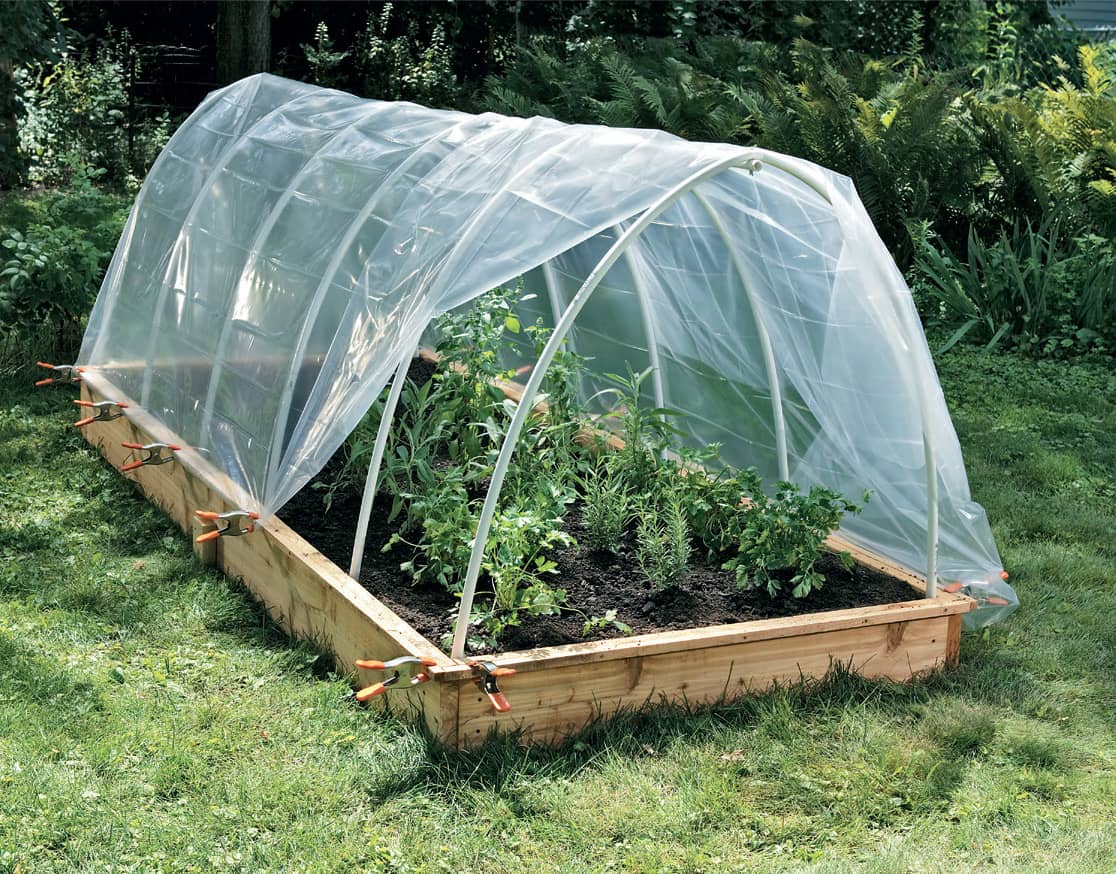
A hoop house is a perfect choice for growing tall, bushy plants where a greenhouse is not practical.
Cold frames. Want to keep harvesting ripe salad greens into December? A cold frame may be just what you need. Cold frames are easy to construct in place over an existing garden bed. The structure is essentially a wedge-shaped outer frame angled to the south to take advantage of the sun, with a cover that can be as simple as plastic sheeting with a simple frame attached with hinges, or an operable recycled window. A cold frame is limited by the internal space.

Cold frames are a simple way to extend the growing season.

Cold frames are angled to the south to take full advantage of the sun.
Greenhouses. Greenhouses are the ultimate ripeness extender. A fully outfitted greenhouse will allow to grow crops year-round, and even a modest greenhouse will extend your growing to all but the coldest, darkest months. The downside is expense. But if you use a greenhouse every year and grow abundant crops that you might otherwise buy, you’ll be amortizing the original cost over time and will probably realize value in the long run. Greenhouses are also a way to grow fruits that wouldn’t necessarily ripen in your local climate. For instance, you can grow citrus trees in containers, and wheel them into the greenhouse when the weather turns freezing but the trees are still producing.
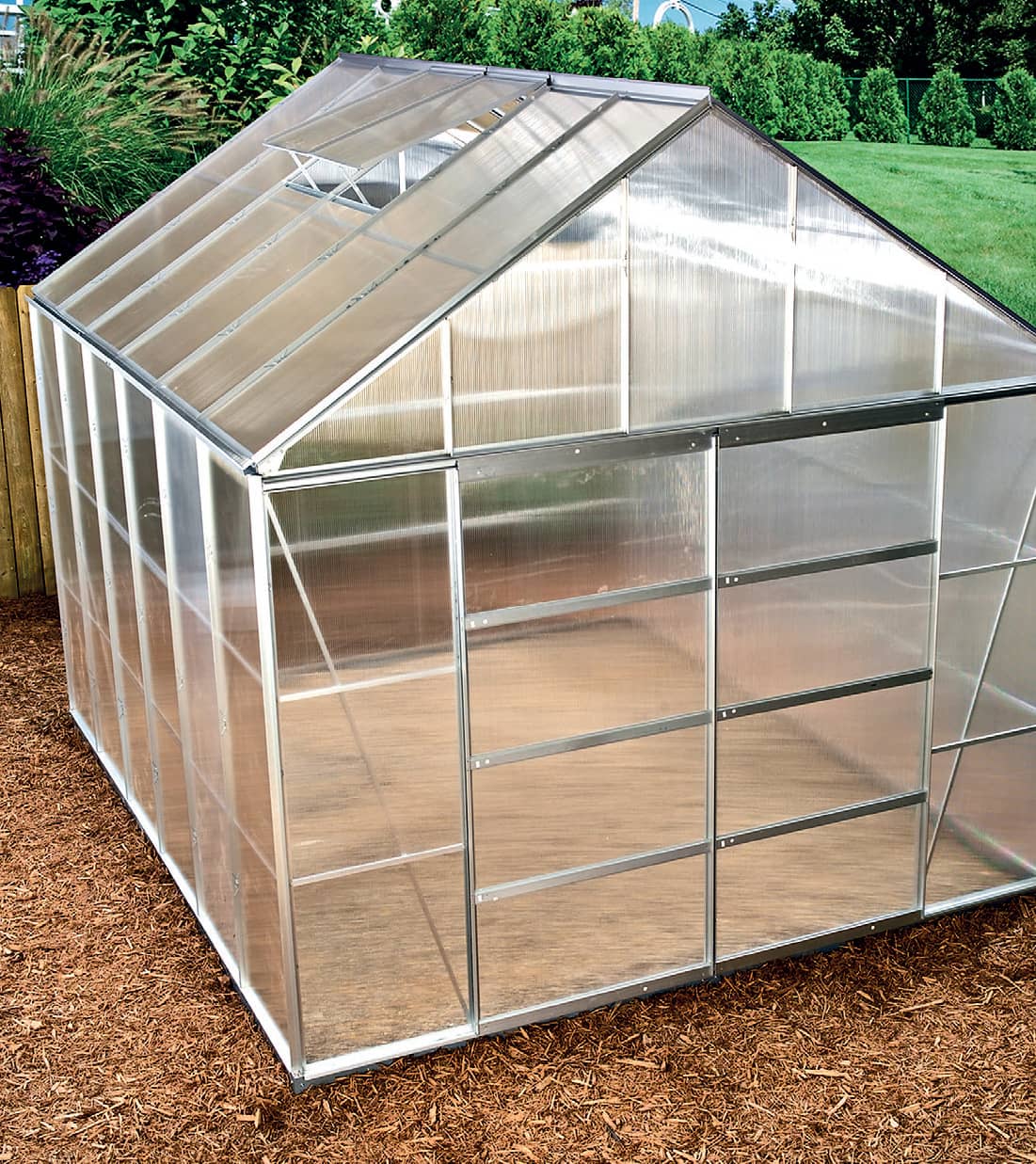
A permanent greenhouse is a solution for very serious gardeners.
SUCCESSION PLANTING
A way to have the maximum amount of fresh, ripe produce from your garden and get the most return on your gardening investment is to plant crops in succession. This involves a good bit of planning, but can pay off in the long in ripe produce you won’t need to buy from the supermarket (and that may well be better quality).
You can plant successive crops of fast-growing fruits and vegetables such as radish and carrots, but the greatest potential in succession planting lies in cascading different crops, one right after the other. Do it right, and you’ll have something ripe to enjoy from the garden from mid-spring through to early winter. Your garden will be busy for three seasons.
Use the charts in each profile to plan out your own succession gardening, using locally grown varieties of the plants that capture your interest. Do it right and you’ll never have to ask, “Is it ripe?” Because at any one time, something surely will be.